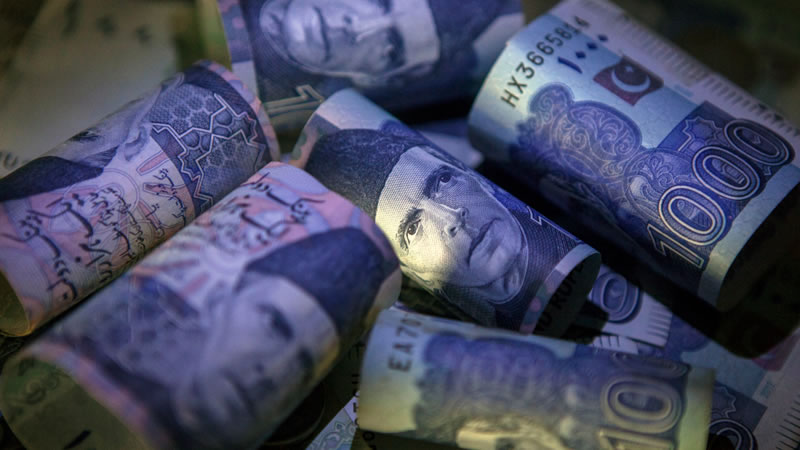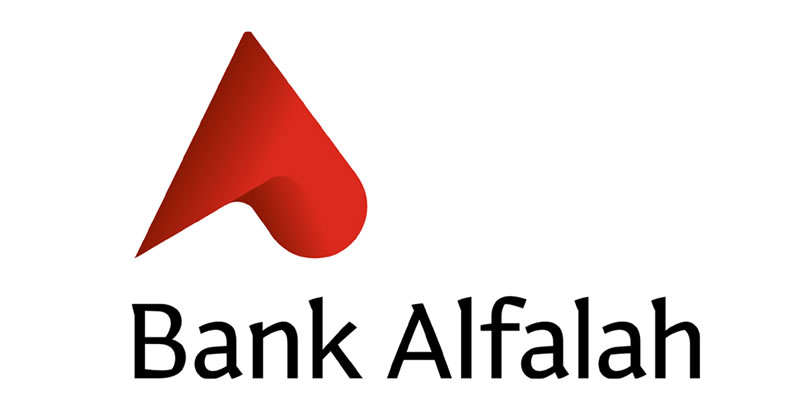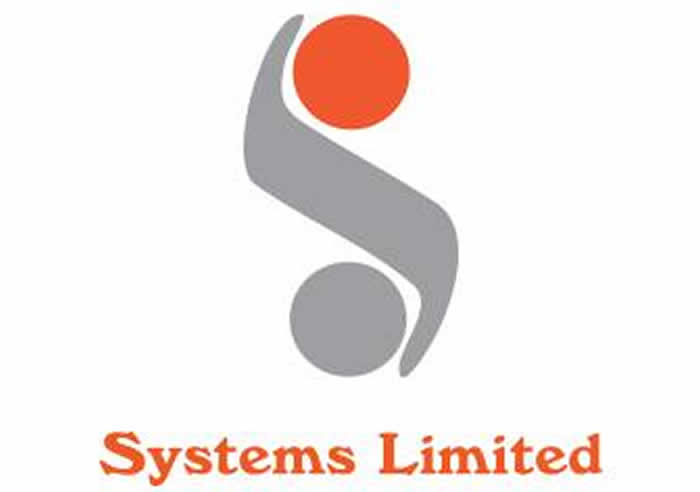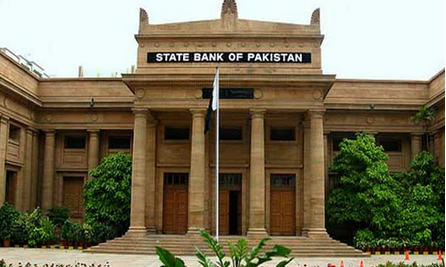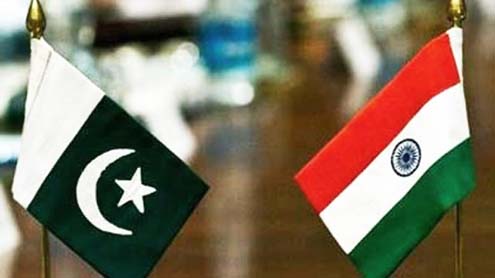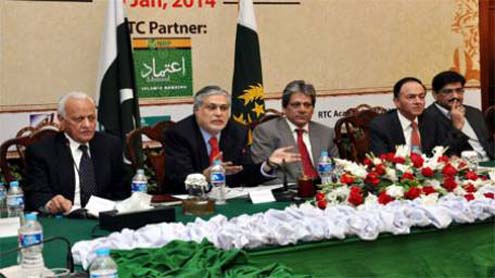 KARACHI: The State Bank of Pakistan (SBP) has said that fiscal discipline and restrictions on Government borrowing from SBP are necessary to contain inflationary expectations, which have become ingrained in recent months, according to State Bank’s Third Quarterly Report on the State of Pakistan’s Economy for FY11 released today.‘In overall terms, although the post-flood hike in CPI inflation has largely dissipated, inflation is stubborn, in excess of 13 percent.Possible reasons could include: (a) the lagged impact of government borrowings from SBP during Jul-Sep 2010; (b) frequent upward adjustments in utility and POL prices; (c) increase in commodity prices; and (d) the rising trend in the house rent index (HRI),’ the Report observed.The Report said the Government is facing difficulties in containing the fiscal deficit. SBP Report stressed that implementation of fiscal reforms still poses political challenges. ‘For instance, structural problems that require difficult policy decisions for fiscal consolidation (e.g. expanding the base of GST through the withdrawal of exemptions, tax on agri-income, and restructuring and privatization of PSEs) are pending resolution and awaiting multi-partisan consensus,’ the Report added.As far as financing is concerned, the Report observed that the Government has had little option but to rely on domestic sources to finance a growing fiscal gap.More specifically, while borrowing from SBP was largely contained at end-September 2010 levels, the abrupt change from April 2011 onwards (the Government borrowed over Rs 350 billion from the central bank during 31st March – 3rd May 2011) were largely meant to internalize the growing quasi-fiscal expense (e.g. the circular debt in energy) into the budget.In other words, this borrowing is actually financing the carry-over of quasi-fiscal deficits from previous years, according to the Report.
KARACHI: The State Bank of Pakistan (SBP) has said that fiscal discipline and restrictions on Government borrowing from SBP are necessary to contain inflationary expectations, which have become ingrained in recent months, according to State Bank’s Third Quarterly Report on the State of Pakistan’s Economy for FY11 released today.‘In overall terms, although the post-flood hike in CPI inflation has largely dissipated, inflation is stubborn, in excess of 13 percent.Possible reasons could include: (a) the lagged impact of government borrowings from SBP during Jul-Sep 2010; (b) frequent upward adjustments in utility and POL prices; (c) increase in commodity prices; and (d) the rising trend in the house rent index (HRI),’ the Report observed.The Report said the Government is facing difficulties in containing the fiscal deficit. SBP Report stressed that implementation of fiscal reforms still poses political challenges. ‘For instance, structural problems that require difficult policy decisions for fiscal consolidation (e.g. expanding the base of GST through the withdrawal of exemptions, tax on agri-income, and restructuring and privatization of PSEs) are pending resolution and awaiting multi-partisan consensus,’ the Report added.As far as financing is concerned, the Report observed that the Government has had little option but to rely on domestic sources to finance a growing fiscal gap.More specifically, while borrowing from SBP was largely contained at end-September 2010 levels, the abrupt change from April 2011 onwards (the Government borrowed over Rs 350 billion from the central bank during 31st March – 3rd May 2011) were largely meant to internalize the growing quasi-fiscal expense (e.g. the circular debt in energy) into the budget.In other words, this borrowing is actually financing the carry-over of quasi-fiscal deficits from previous years, according to the Report.
The SBP Report further said that the impact of the widening fiscal deficit is clearly visible in the sharply rising domestic debt.Outstanding Government domestic debt reached Rs 5,594 billion (31.8 percent of estimated GDP) which is more than double the stock at end-June 2007, the Report said and added that this sharp growth in debt stock is fueling concerns about macro stability and monetary management.In addition, the maturity profile of domestic debt reveals that the government has to rollover the entire stock of Rs 2,854 billion of short term debt at least once a year.Any surge in credit demand from other sectors of the economy could elevate rollover risk, and could also expose the government to interest rate risk,’ the Report added.
In terms of fiscal management, going forward, desirable revenue generating measures (e.g. broadening of the tax base, improving documentation of the economic system, gradual elimination of un-targeted subsidies and curtailment of quasi-fiscal operations) are necessary to contain the fiscal deficit to below 4.5 percent of GDP in FY12, the Report said, adding that these efforts need to be accompanied with better debt management to increase the tenor of domestic debt and lower risks associated with debt re-pricing and rollover.While emphasizing on significant improvement in the external sector, the Report said that the rising prices of value added textiles and strong growth in remittances are main factors that pushed the current account into a surplus of US$ 748 million (Jul-Apr 2011) from a deficit of US$ 3.5 billion in the corresponding period of the preceding year. Textile exports managed to post strong growth despite efforts by competitor countries to hinder concessionary access of Pakistani products in developed markets, the Report said and added that the steady growth in remittances is a welcome development – for the first time in Pakistan’s history, monthly remittances crossed the US$1 billion mark for two consecutive months (March and April 2011).
‘This comfort from the external account together with broadly contained government borrowings from the central bank, allowed SBP to hold the policy rate at 14 percent in the last three policy announcements (January, March and May 2011).These decisions reveal a shift when compared to the cumulative increase of 150 bps implemented during H1-FY11.For effective monetary management, maintaining government borrowings from SBP at end-September 2010 levels will be critical,’ the Report emphasized.‘Provisional estimates put forward by the National Income Accounts Committee show GDP growth at 2.4 percent for FY11, lower than the growth of 3.8 percent in the previous year. In the context of the prevailing security concerns, the exogenous shock from rising oil prices and the impact of the unprecedented floods, this decline is broadly in line with SBP’s expectations,’ the Report added.
The Report said that on a positive note, the post-flood recovery in wheat, sugarcane and minor crops helped agricultural growth surpass previous year’s level.However, rural incomes may not rise proportionately due to lower market prices of wheat and rising input costs (e.g. diesel and fertilizer), the Report added.In the manufacturing sector, demand for products, particularly textiles, autos, fertilizer, cement, and POL remained strong, the Report said, adding that nevertheless, despite this strong demand, supply constraints – particularly the shortfall in energy – created production bottlenecks, which led to a significant slowdown in industrial growth.
‘In our view, the growth outlook will be shaped by policy responses to several key domestic challenges: (1) energy shortages, which are restricting growth; (2) the high fiscal deficit whose financing has become difficult – partly owing to the backlog arising from the non-recognition of power sector subsidies of earlier years as reflected in the circular debt; (3) build-up of domestic debt, raising concerns for macro stability; and (4) inflationary pressures which are not receding readily,’ according to the Report.SBP Report said that going forward the policy challenge is to distribute available gas supplies efficiently amongst competing users. ‘Keeping this in view, the ECC recently decided to divert gas supply to the fertilizer sector, recognizing the importance of stable agricultural input prices and saving foreign exchange on imported fertilizer,’ the Report added.
‘In the context of a sustainable energy policy, we believe that feasible alternatives to furnace oil (for power generation) need to be developed urgently. Furthermore, the potential role of imported gas is unquestionable in the medium-term, and policy emphasis must be directed towards developing the necessary infrastructure to use imported gas,’ the Report said, adding that more importantly, a better policy option going forward is to rationalize tariffs for different users of this scarce resource and improve the gas pricing structure to incentivize further exploration and extraction. – Brecorder




